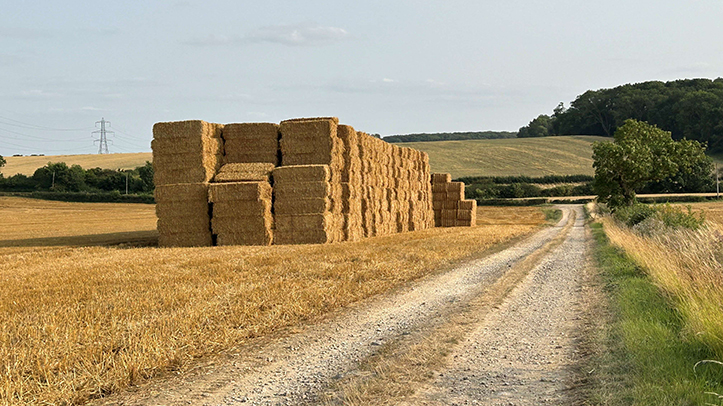Farmers are being urged to take precautions and follow a few simple steps to reduce exposure to accidental damage or injury caused by falling straw or hay stacks, as well as fire risks as a result of malicious intent.
“The first consideration should be to make sure appropriate signage is in place,” said Nigel Wellings, director of Acres Insurance Brokers.
“The Health & Safety Executive will insist on, and expect you to have, danger signs around stacks, warning of the risk of falling bales.”
According to Mr Wellings, there is however a growing conundrum for farmers, balancing key priorities focused on health and safety requirements, with minimising fire risks caused by a criminal element.
“We are already witnessing a number of malicious fires this season, so clearly the focus is to move hay and straw stacks as soon as possible, and to do so you need easy access to them,” he said.
“It is quite natural, therefore, that these bales are stacked near to farm roads so they can be moved quickly, but this in turn opens up more opportunity for those with malicious intentions to start fires. Our advice is to get the bales back to the main base or building as quickly as possible.”
Mr Wellings also advised that the majority of insurance companies will also impose stack limits on the value they will insure, on any one stack, often around £25,000 to £30,000.
“Farmers need to be aware and check with the insurance provider what their individual stack limit is, as well as checking the safety of these stacks,” he said.
Rights of way
A key safety point to consider, is keeping stacks away from rights of way, or other areas where the public may have close proximity.
Mr Wellings flagged up one incident where, although not by a right of way, a local ploughing match was taking place, with many attendees with vintage tractors and small ploughs, driving close by a neighbouring field with a large straw stack.
Fortunately, nothing happened at the time, but after the ploughing match, the headland next to the stack was being combined, and bales from the eight-bale high stack came down, writing the combine header off, and trapping the combine driver in his cab temporarily.
“While the resulting damage was covered, had that happened when the vintage tractors went by, it could have been a very different and tragic outcome,” Mr Wellings warned.
It is also important to remember that weather will have an impact on the bales, and if heavy rain is soaked up, it could mean stacks that were previously perfectly stable, could soon become unsafe, start leaning and eventually falling.
“We also now see a growing number of bale chasers, hydraulically stacking bales from the trailer. These often tend not to be as safe as those stacked by a telescopic loader, so more care needs to be taken,” added Mr Wellings.
“This again highlights the importance of placing ‘danger’ signs around stacks, it is not just a box ticking exercise. Even if the stacks are stored in a building, there needs to be appropriate signage on display on the outside of that building.”
Finally, Mr Wellings reminded operators to avoid parking machinery next to the stack, due to the potential of the machinery being taken out if someone were to maliciously set fire to the stack, but also to avoid accidental damage from any falling bales.
“It is all a bit of a reminder, and of course, every farmer needs to consider their own circumstances, but following these simple steps can help reduce your risks,” he said.


